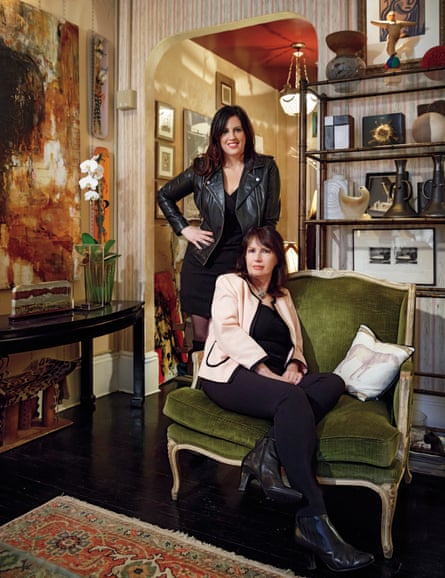In 2015, an architecture firm approached me to take some photographs of the renovations they’d made to the historic Chelsea Hotel after the building was sold. The photographs I took were forgettable, but when I looked down the iron staircase I saw something of the hotel’s former glory. Pieces of the tenants’ artwork decorated the stairwell and amid the construction mess were visible signs of a vibrant community of residents who cared deeply for their home. I had only a vague sense of the Chelsea then, primarily through the film Sid and Nancy and from living in New York on the edge of the punk scene.
An aura of fame and creativity emanated from the hotel. Former residents include Allan Ginsberg, Arthur Miller, Stanley Kubrick, Bob Dylan and Patti Smith; Dylan Thomas and Nancy Spungen died there; Madonna lived and shot her Sex book there, and Leonard Cohen wrote two songs about the affair he had there with Janis Joplin. Struck by what I had seen, I set out to photograph the homes of the last remaining residents before the historic units were further sterilised. The Chelsea’s demise was imminent; I had a precious few months before it would all disappear.
I met resident Tony Notarberardino for the first time in 2015 and entering his apartment was like crossing into another dimension. In his living room, lit by dozens of candles, my wife and I were rapt as he told us about his life in the hotel. His bedroom was painted in deep reds and ochres and decorated as a kind of burlesque netherworld. When we stepped from the hotel on to 23rd Street the sounds of traffic suddenly returned and we found ourselves back in the real world. But Tony’s home had created a distinct and powerful shift in my perception of the hotel and I began to form a deeper understanding of the worlds people carved out there: his apartment was not only an extension of his personality, but a collection of the lives of those who had lived there before him. The Chelsea is a collaboration across time, an accumulation of the marks so many have made on it. At least until now.

The renovation of the Chelsea has progressed very slowly. The months stretched to four years. In the intervening time it has changed ownership twice and it’s still unclear when the Chelsea will finally reopen. At the time of writing multiple lawsuits are pending. In the midst of ongoing renovation there has been terrible destruction, but there have also been victories. The remaining tenants have claimed their rent-stabilised status and may remain. Things are changing, but they’re not dying, as I had originally speculated. And, over time, my project evolved from a requiem to a celebration of what lives on at the Chelsea.
This project is about how creative people forge a place for themselves during times of turmoil. The photographs capture a moment in this process and frame an instant of a city in constant transition. Gone are the times when those living alternative lifestyles could find shelter in New York for meagre rents. But those artists who found that at the Chelsea have persisted; they’re still living creative and important lives. On one of my last shoots I met artist Bettina Grossman, a tenant at the Chelsea. I noticed on her door, as I was leaving, a small scrap of paper with the handwritten words “Sanctuary – Protect the Magic.” I hope my work will help to preserve and share some of the magic.
Australian filmmaker Tony Notarberardino moved into the hotel in 1994, eventually landing in Dee Dee Ramone’s old apartment. It was previously occupied by artist Vali Myers, who’d turned her room into a living art installation, and entertained contemporaries including Patti Smith and Salvador Dali there. She painted the walls in rich, earthy yellows, reds, and browns, interspersed with checkerboard patterns and animal portraits. Notarberardino has resisted the developers, and argues that his refusal to renovate or leave is an important act of resistance that will help preserve the hotel’s history. “People want to come here and touch the wall that Jack Kerouac touched; they want that authenticity.” If nothing else, he believes, the hotel might once again attract artists and musicians at the peaks of their careers. “The Chelsea’s going to outlive everybody.”

With her husband, nightclub owner Arthur Weinstein, interior designer Colleen brought up their daughter Dahlia in the Chelsea. It took a while, though, for Colleen to come round to the apartment. The turning point was when they uncovered the original marble in the lobby. Since her father’s death, Dahlia has moved back in. As a kid she had mixed feeling about living in the hotel, but grew to love the actors, musicians and writers who populated the lobby. “Everyone was so friendly and open about their lives and their careers,” she remembers. “As I got older, I appreciated it more.”
New York nightlife icon Susanne Bartsch arrived in Manhattan in 1987. Of her influence on the drag scene, RuPaul said Bartsch “picked up where Andy Warhol left off”. The transformation of her apartment at the Chelsea has been a proxy for her personal life. With one boyfriend she added a bedroom and curved hallway, with the next she painted the hallway electric pink, gold, and purple, the bedroom red (with an antique opium bed) and mosaiced the bathroom with mirrors. When she had a baby with her third partner, they took over the rooms once occupied by Janis Joplin. “The Chelsea Hotel is a bit like my mum,” Bartsch says, because she feels taken care of here. An interior design feature once referred to her apartment as a museum, but, says Bartsch, “It’s not that precious.”
Hotel Chelsea: Living in the Last Bohemian Haven by Colin Miller and Ray Mock is out now (Monacelli Press, £40)

Comments (…)
Sign in or create your Guardian account to join the discussion